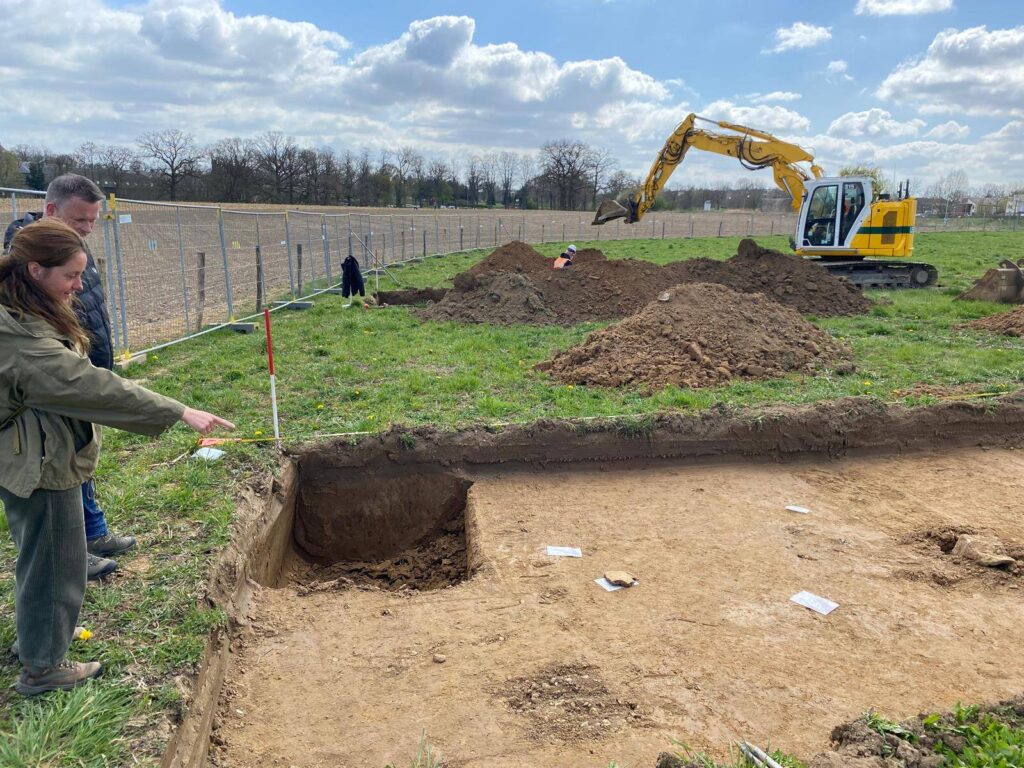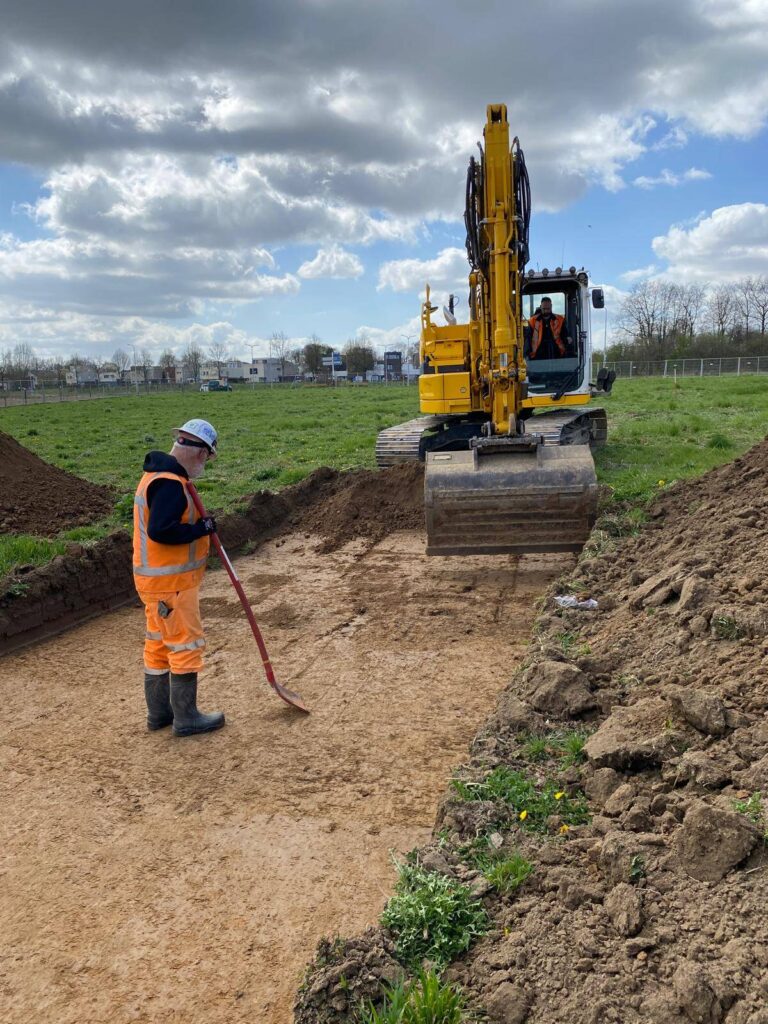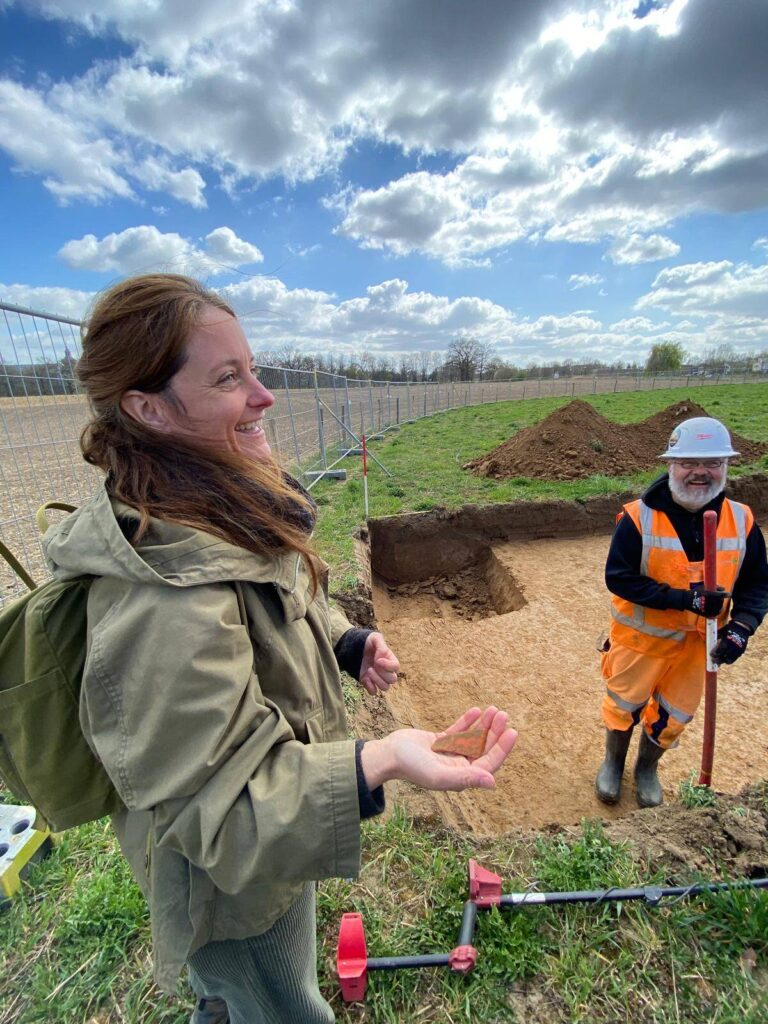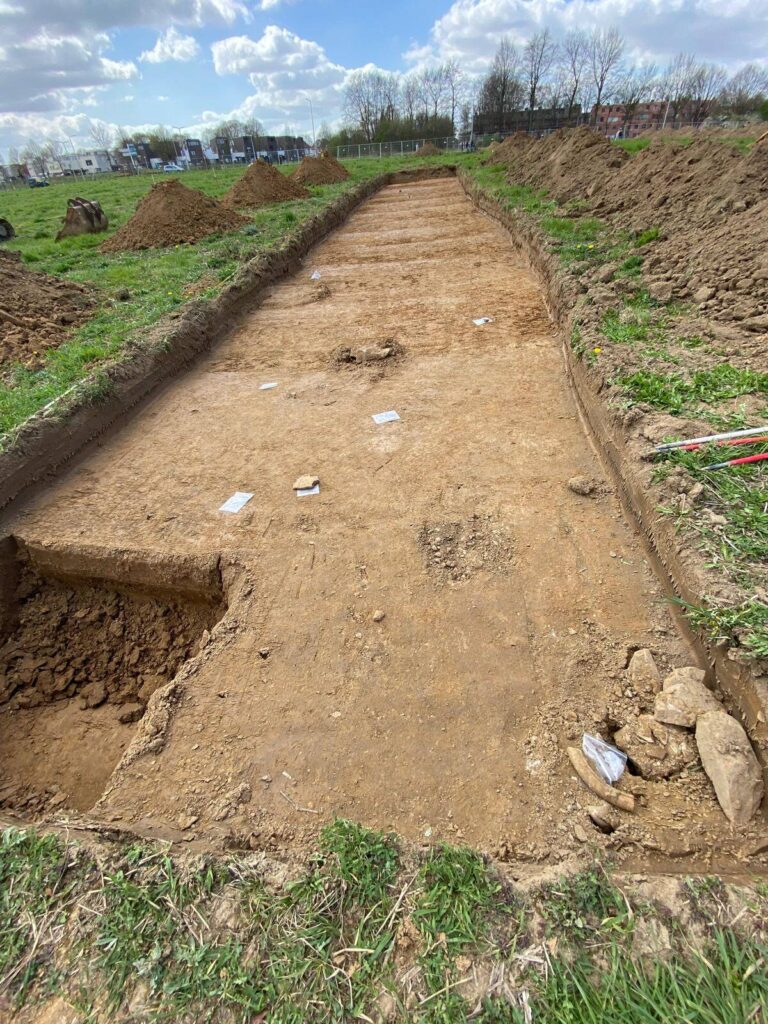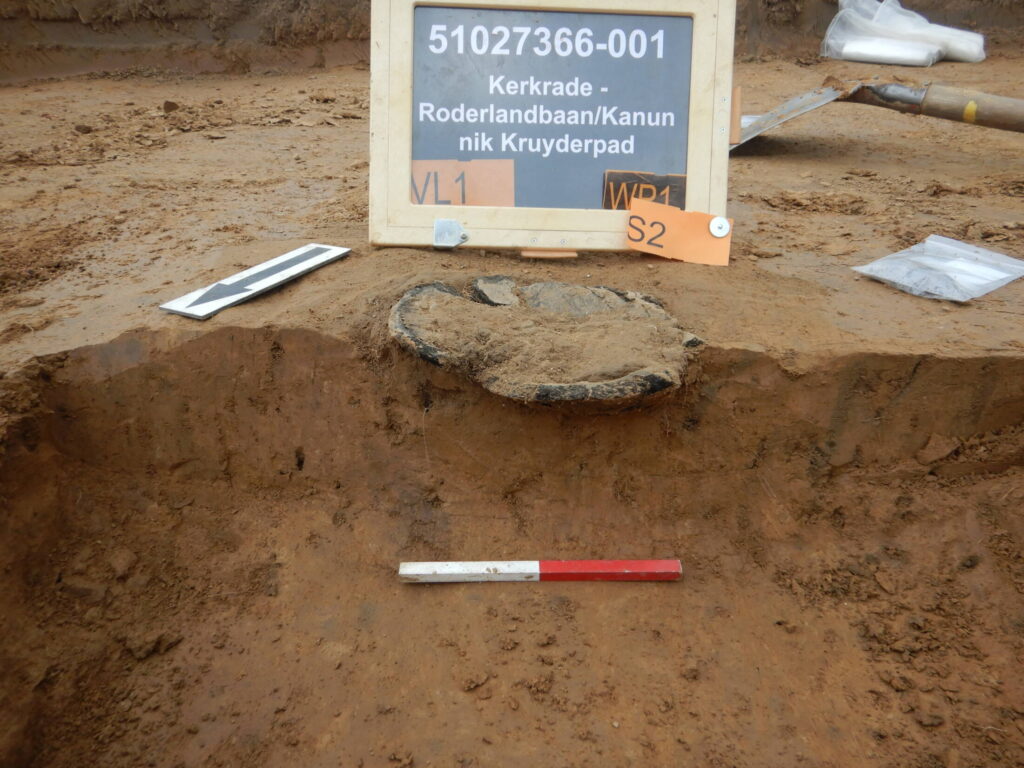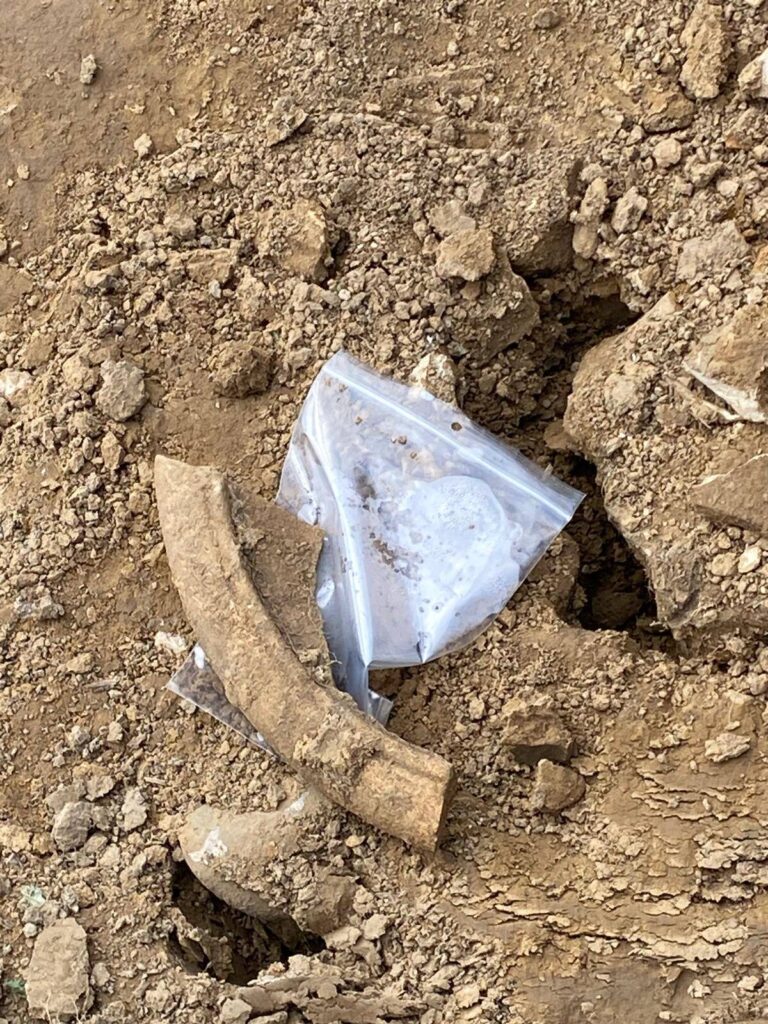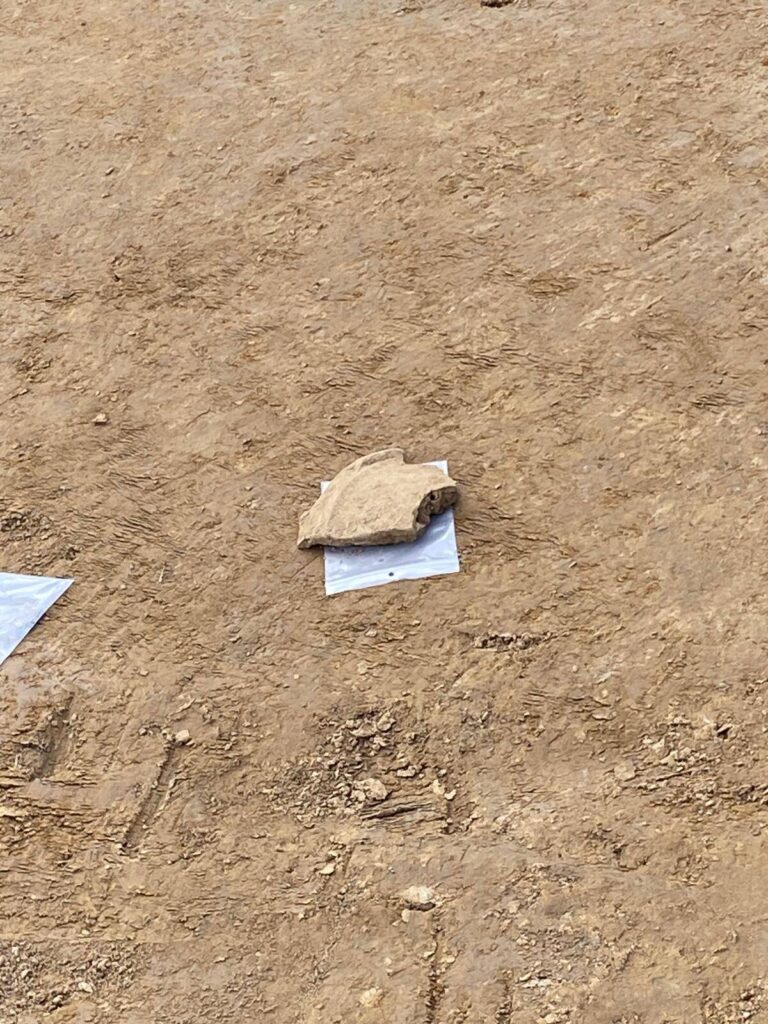Villa Rolduc discovered
In search of a Roman villa Rolduc in Kerkrade: an archaeological discovery!
In March 2025, it was an exciting time on the grounds alongside Rolduc Abbey in Kerkrade. Archaeologists were working with an imposing excavator to uncover a fascinating piece of history: a possible Roman villa. And with success!
Why exactly dig here?
This site had been in the spotlight for some time. Amateur archaeologists and previous investigations already uncovered several finds, such as Roman building material and even the remains of a horreum (a Roman granary), discovered during the construction of the Roderland track. Moreover, in 2018, geophysical research confirmed strong indications of the presence of buildings. Enough reason, therefore, to start an extensive archaeological investigation.
Looking for traces of the past
On March 24, 2025, archaeologists enthusiastically began their search. The immediate cause? The planned construction of a life tree forest on the plateau. Digging tree planting holes would disturb the soil and possibly affect valuable archaeological traces. But why exactly here do they expect to find a Roman villa? Simple: the location is ideal! The Romans also saw this beautiful plateau as a perfect place for a farm.
Still, finding traces proved more difficult than expected. The first discoveries were not even Roman, but even older: two hand-formed urns containing cremation remains from late prehistoric times, possibly belonging to a burial field. These urns were carefully recovered “in block” so that specialists could further investigate them and determine their exact age.
Doubts and breakthroughs
As the excavations progressed, uncertainty grew. Had the Roman remains perhaps been washed away after all? Had there ever been a villa at all? The tension rose… Until finally the first convincing find was made: a beautiful Roman rubbing bowl. This meant only one thing: there had to be more! And indeed, clear foundation remains of a Roman villa emerged.
With this discovery, Kerkrade officially has a new Roman villa in addition to the well-known villas Holzkuil and Kaalheide. It is believed that a total of eleven Roman villas stood in the region, which makes sense given the fertile soil, ideal for agriculture.
Preserving the past
Although the foundation remains are now officially recorded, the municipality of Kerkrade chooses to limit further excavation. After all, what remains underground is best preserved for future generations with possibly even more advanced research techniques.
In this way, Kerkrade’s history not only remains alive, but also protected for the future. And who knows what secrets the soil still hides here?
